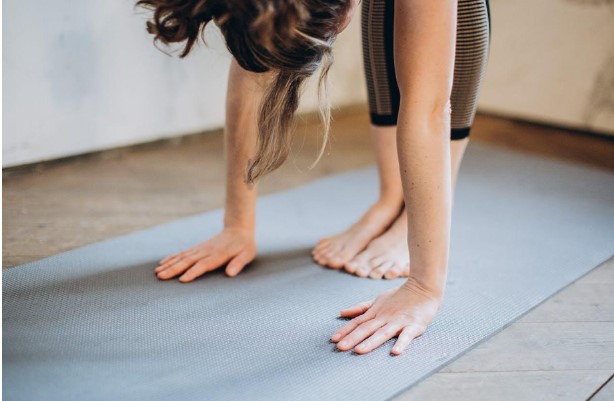6 Simple Steps to Alleviate Stiffness and Enhance Flexibility

Flexibility is not just for athletes or yoga enthusiasts; it’s a crucial component of overall health that can enhance your daily life. Whether you’re reaching for that top shelf or bending over to tie your shoes, improved flexibility can make these tasks easier and reduce the risk of injuries.
In this blog post, we’ll explore how improving your flexibility can have a positive impact on your health and provide practical steps to get started.
Assess Your Current Flexibility Level
Before embarking on a flexibility improvement plan, it’s important to know where you stand. Assessing your current flexibility level is the first step in creating a tailored program that meets your needs. You can start by doing some basic exercises to test your flexibility.
Try touching your toes while standing with your legs straight, or sit on the floor with your legs extended to see how far you can reach. Each movement can give you insights into areas where you might need improvement.
Consult with a Chiropractor
Consulting with a chiropractic clinic can provide additional insight into your flexibility and movement patterns. Chiropractors specialize in the musculoskeletal system and can offer personalized advice based on your unique needs.
Through assessments and adjustments, they can help identify areas of stiffness or misalignment that might be affecting your flexibility. They can also provide guidance on exercises and stretches that can complement your efforts.
Incorporate Dynamic Stretching into Your Routine
Dynamic stretching involves moving parts of your body through a full range of motion. Unlike static stretches that you hold in place, dynamic stretches are active movements that help warm up your muscles.
Incorporating dynamic stretching into your routine can help improve flexibility while also preparing your body for physical activity. Examples of dynamic stretches include arm circles, leg swings, and torso twists.
These movements gradually increase your heart rate and blood flow to your muscles, making them more pliable and ready for exercise.
Utilize Yoga for Improved Flexibility
Yoga is renowned for its ability to enhance flexibility and promote relaxation. With a variety of poses targeting different muscle groups, yoga can be a valuable addition to your flexibility routine.
Poses like Downward Dog, Warrior, and Pigeon can stretch and strengthen your muscles, increasing your overall flexibility. Besides physical benefits, yoga also offers mental benefits by reducing stress and promoting mindfulness.
Practicing yoga regularly can lead to significant improvements in flexibility while also contributing to your overall well-being.
Implement Regular Mobility Exercises
Mobility exercises are designed to improve the range of motion of your joints and muscles. Simple mobility exercises like shoulder rolls, hip circles, and knee raises can be performed anywhere, making them easy to integrate into your daily routine.
It’s also worth considering chiropractic care as a supplement to your mobility exercises. A chiropractor can offer techniques and adjustments to help alleviate stiffness and improve joint function. Regular visits can aid in identifying underlying issues that might be hindering your flexibility progress.
Focus on Post-Workout Static Stretching
Static stretching is essential for cooling down after a workout and helping your muscles recover. These stretches involve holding a position for a set period, allowing your muscles to lengthen and relax. After exercise, your muscles are warm and pliable, making it an ideal time to perform static stretches.
Focus on holding stretches for at least 20-30 seconds, breathing deeply to assist in relaxation. Stretches like hamstring stretches, quad stretches, and tricep stretches can target major muscle groups and aid in recovery.




